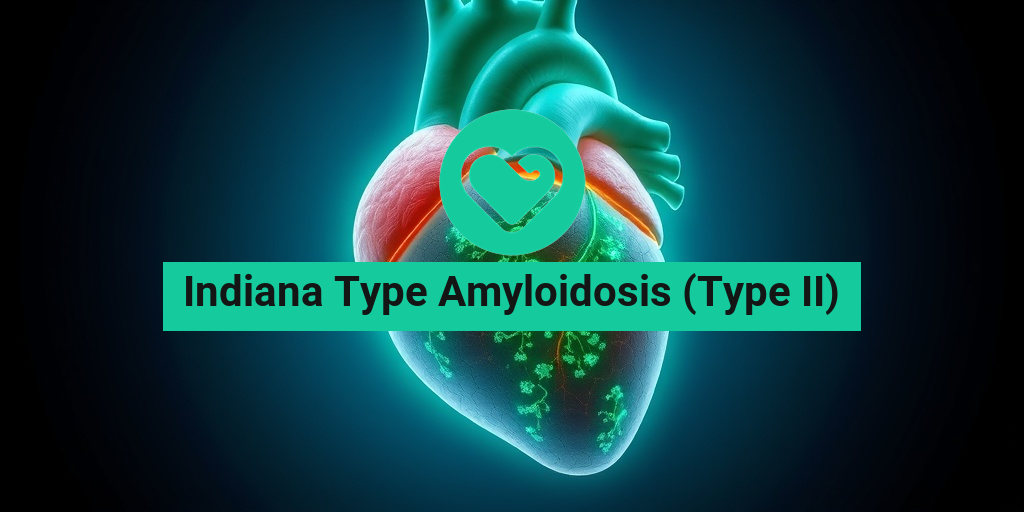What Is Angina?
Angina is a term that refers to chest pain or discomfort caused by reduced blood flow to the heart muscle. This condition is often a symptom of coronary artery disease (CAD), where the arteries that supply blood to the heart become narrowed or blocked. Understanding angina is crucial, as it can be a warning sign of more serious heart issues, including heart attacks.
When someone experiences angina, they may describe it as a feeling of pressure, squeezing, or fullness in the chest. The pain can also radiate to the shoulders, neck, arms, back, teeth, or jaw. It’s important to note that while angina can be uncomfortable, it is not the same as a heart attack. A heart attack occurs when blood flow to a part of the heart is completely blocked, leading to damage to the heart muscle.
Symptoms of Angina
The symptoms of angina can vary from person to person, but common signs include:
- Chest pain or discomfort: Often described as pressure, squeezing, or heaviness.
- Pain in other areas: Discomfort may also be felt in the arms, neck, jaw, back, or stomach.
- Shortness of breath: This may occur along with chest discomfort.
- Nausea or fatigue: Some individuals may experience these symptoms, especially women.
If you experience these symptoms, especially during physical activity or emotional stress, it’s essential to consult a healthcare professional. Early diagnosis and management can significantly improve outcomes.
Types of Angina
Angina is categorized into several types, each with distinct characteristics and implications for treatment. Understanding these types can help individuals recognize their symptoms and seek appropriate care.
1. Stable Angina
Stable angina is the most common form and typically occurs during physical exertion or emotional stress. The symptoms are predictable and usually subside with rest or medication, such as nitroglycerin. This type of angina is often a sign of underlying coronary artery disease but is generally manageable with lifestyle changes and medications.
2. Unstable Angina
Unstable angina is more serious and can occur unexpectedly, even at rest. The pain may last longer and be more intense than stable angina. This type of angina is a medical emergency, as it can indicate an impending heart attack. If you experience symptoms of unstable angina, seek immediate medical attention.
3. Variant Angina (Prinzmetal’s Angina)
Variant angina, also known as Prinzmetal’s angina, is caused by a spasm in the coronary arteries, leading to temporary narrowing and reduced blood flow. This type of angina can occur at rest and is often associated with stress or smoking. It may respond well to medications that relax the blood vessels.
4. Microvascular Angina
Microvascular angina is a less common form that occurs due to problems in the small blood vessels of the heart. Individuals with this type may experience chest pain without significant blockages in the larger coronary arteries. Treatment often focuses on managing symptoms and improving overall heart health.
Recognizing the Signs
Being aware of the different types of angina and their symptoms is crucial for timely intervention. If you or someone you know experiences chest pain or discomfort, especially if it is new or changing, don’t hesitate to reach out to a healthcare provider. Resources like Yesil Health AI (yesilhealth.com) can provide evidence-based answers and guidance on managing heart health.
In conclusion, understanding angina and its types can empower individuals to take charge of their heart health. Whether it’s stable, unstable, variant, or microvascular angina, recognizing the symptoms and seeking appropriate care can lead to better outcomes and a healthier life. ❤️

Angina Symptoms
Angina is a term that refers to chest pain or discomfort caused by reduced blood flow to the heart. Understanding the symptoms of angina is crucial for early detection and management. Here are the most common symptoms associated with this condition:
Chest Pain or Discomfort
The hallmark symptom of angina is a feeling of pressure, squeezing, or fullness in the chest. This sensation can vary in intensity and may last for a few minutes or longer. It’s often described as:
- Pressure: A heavy weight on the chest.
- Squeezing: A tightness that feels like a band around the chest.
- Burning: A sensation similar to heartburn.
Pain Radiating to Other Areas
Angina pain can extend beyond the chest. It may radiate to:
- Arms: Often the left arm, but can affect both.
- Shoulders: A feeling of discomfort in the shoulder area.
- Neck and Jaw: Pain that feels like a toothache or soreness in the jaw.
- Back: Discomfort that may feel like a muscle strain.
Shortness of Breath
Many individuals with angina experience shortness of breath, especially during physical activity or emotional stress. This symptom can occur alongside chest pain or on its own, making it essential to pay attention to your body’s signals.
Other Symptoms
In addition to the primary symptoms, angina may also present with:
- Nausea: A feeling of sickness that may accompany chest discomfort.
- Fatigue: Unusual tiredness, especially after exertion.
- Dizziness: A sensation of lightheadedness or fainting.
Recognizing these symptoms is vital, as they can indicate a serious condition. If you experience any of these signs, especially if they are new or worsening, it’s important to seek medical attention promptly. 🚑
Angina Causes
Understanding the causes of angina is essential for prevention and management. Angina typically arises from a lack of oxygen-rich blood reaching the heart muscle, often due to underlying heart conditions. Here are the primary causes:
Coronary Artery Disease (CAD)
The most common cause of angina is coronary artery disease. This condition occurs when the coronary arteries become narrowed or blocked due to a buildup of plaque, which is made up of fat, cholesterol, and other substances. This narrowing restricts blood flow to the heart, leading to angina symptoms.
Other Heart Conditions
Besides CAD, several other heart-related issues can lead to angina, including:
- Coronary Microvascular Disease: Affects the small blood vessels of the heart.
- Spasm of Coronary Arteries: Temporary tightening of the muscles within the arteries, which can reduce blood flow.
- Heart Valve Problems: Conditions affecting the heart valves can also lead to angina.
Risk Factors
Several risk factors can increase the likelihood of developing angina, including:
- High Blood Pressure: Puts extra strain on the heart.
- High Cholesterol: Contributes to plaque buildup in the arteries.
- Smoking: Damages blood vessels and reduces oxygen in the blood.
- Diabetes: Increases the risk of heart disease.
- Obesity: Excess weight can lead to other risk factors like high blood pressure and diabetes.
- Physical Inactivity: Lack of exercise can contribute to heart disease.
Emotional Stress
Emotional stress can also trigger angina episodes. Stress causes the body to release hormones that can increase heart rate and blood pressure, leading to increased oxygen demand from the heart. Managing stress through relaxation techniques, exercise, and therapy can help mitigate this risk.
By understanding the symptoms and causes of angina, individuals can take proactive steps towards heart health. If you suspect you may be experiencing angina, consult with a healthcare professional for a thorough evaluation and personalized care. ❤️

Risk Factors for Angina
Angina is a type of chest pain caused by reduced blood flow to the heart. Understanding the risk factors for angina is crucial for prevention and early intervention. Here are some of the most significant factors that can increase your likelihood of developing this condition:
1. Age
As we age, the risk of developing heart-related issues, including angina, increases. Men over the age of 45 and women over 55 are particularly at risk due to changes in heart health and blood vessel elasticity.
2. Family History
If you have a family history of heart disease, your risk for angina may be higher. Genetics can play a significant role in your overall heart health, making it essential to be aware of your family’s medical history.
3. Lifestyle Choices
- Smoking: Tobacco use is a major risk factor for heart disease and angina. It damages blood vessels and reduces oxygen in the blood.
- Poor Diet: A diet high in saturated fats, trans fats, and cholesterol can lead to plaque buildup in the arteries, increasing the risk of angina.
- Lack of Exercise: Physical inactivity contributes to obesity and other health issues that can elevate the risk of angina.
4. Medical Conditions
Several medical conditions can increase your risk of angina, including:
- High Blood Pressure: Hypertension can damage arteries over time, leading to reduced blood flow to the heart.
- Diabetes: This condition can affect your body’s ability to use insulin effectively, leading to higher blood sugar levels that can damage blood vessels.
- High Cholesterol: Elevated cholesterol levels can lead to plaque buildup in the arteries, restricting blood flow.
5. Stress
Chronic stress can have a significant impact on heart health. It can lead to unhealthy coping mechanisms, such as overeating or smoking, and can also increase blood pressure, further elevating the risk of angina.
6. Obesity
Being overweight or obese increases the strain on your heart and can lead to conditions like high blood pressure and diabetes, both of which are risk factors for angina.
Angina Diagnosis
Diagnosing angina involves a combination of medical history, physical examinations, and diagnostic tests. If you experience symptoms such as chest pain or discomfort, it’s essential to seek medical attention. Here’s how healthcare professionals typically diagnose angina:
1. Medical History
Your doctor will start by asking about your symptoms, including the nature of your chest pain, when it occurs, and any associated symptoms like shortness of breath or fatigue. They will also inquire about your risk factors for angina, including family history and lifestyle choices.
2. Physical Examination
A thorough physical examination will help your doctor assess your overall health. They may check your blood pressure, heart rate, and listen to your heart and lungs for any irregularities.
3. Diagnostic Tests
- Electrocardiogram (ECG): This test measures the electrical activity of your heart and can help identify any irregularities that may indicate angina.
- Stress Test: A stress test evaluates how your heart performs under physical exertion. This can help determine if your heart is receiving enough blood during activity.
- Imaging Tests: Tests such as echocardiograms or coronary angiography can provide detailed images of your heart and blood vessels, helping to identify blockages or other issues.
4. Blood Tests
Blood tests may be conducted to check for markers of heart disease, such as cholesterol levels and other substances that indicate heart damage.
Early diagnosis and treatment of angina are crucial for preventing more severe heart conditions. If you experience symptoms, don’t hesitate to consult a healthcare professional for a comprehensive evaluation. Remember, your heart health is vital! ❤️

Angina Treatment Options
Angina is a condition characterized by chest pain or discomfort due to reduced blood flow to the heart. Understanding the various angina treatment options available is crucial for managing symptoms and improving quality of life. Here, we’ll explore both lifestyle changes and medical treatments that can help alleviate the discomfort associated with angina.
Lifestyle Changes
Making certain lifestyle adjustments can significantly impact the frequency and severity of angina episodes. Here are some effective strategies:
- Heart-Healthy Diet: Incorporate plenty of fruits, vegetables, whole grains, and lean proteins into your meals. Reducing saturated fats, trans fats, and cholesterol can help improve heart health.
- Regular Exercise: Engaging in moderate physical activity, such as walking or swimming, can strengthen the heart and improve circulation. Always consult with a healthcare provider before starting a new exercise regimen.
- Weight Management: Maintaining a healthy weight reduces the strain on your heart. If you’re overweight, even a small amount of weight loss can make a difference.
- Stress Management: Techniques such as yoga, meditation, and deep breathing exercises can help reduce stress, which is a known trigger for angina.
- Avoiding Tobacco: Smoking is a major risk factor for heart disease. Quitting smoking can improve overall heart health and reduce angina symptoms.
Medications
In addition to lifestyle changes, various medications can help manage angina symptoms:
- Nitroglycerin: This medication helps to relieve angina pain by relaxing blood vessels and improving blood flow to the heart.
- Beta-Blockers: These drugs reduce the heart’s workload and lower blood pressure, which can help prevent angina episodes.
- Calcium Channel Blockers: These medications help relax the blood vessels and reduce the heart’s workload, making them effective for treating angina.
- Antiplatelet Agents: Medications like aspirin can help prevent blood clots, reducing the risk of heart attacks and angina episodes.
Medical Procedures
For some individuals, lifestyle changes and medications may not be enough to manage angina effectively. In such cases, medical procedures may be necessary:
- Angioplasty and Stenting: This minimally invasive procedure involves inserting a balloon to open narrowed arteries and placing a stent to keep them open.
- Coronary Artery Bypass Grafting (CABG): This surgery creates a new pathway for blood to flow to the heart by bypassing blocked arteries.
Living with Angina
Living with angina can be challenging, but with the right strategies and support, individuals can lead fulfilling lives. Here are some tips for managing daily life with angina:
Recognizing Triggers
Understanding what triggers your angina is essential for managing the condition. Common triggers include:
- Physical Exertion: Activities that require significant effort can lead to angina symptoms.
- Emotional Stress: Stressful situations can cause the heart to work harder, potentially triggering angina.
- Extreme Temperatures: Both hot and cold weather can affect blood flow and trigger symptoms.
Creating an Action Plan
Having a plan in place for managing angina can provide peace of mind. Consider the following:
- Keep Medications Handy: Always carry your prescribed medications, especially nitroglycerin, in case of an angina episode.
- Know When to Seek Help: Be aware of the signs that indicate you should seek medical attention, such as prolonged chest pain or symptoms that worsen.
Support Systems
Connecting with others who understand what you’re going through can be incredibly beneficial. Consider:
- Support Groups: Joining a support group for individuals with heart conditions can provide emotional support and practical advice.
- Family and Friends: Educate your loved ones about angina so they can offer support and assistance when needed.
By understanding angina and implementing effective treatment options, individuals can manage their symptoms and improve their overall quality of life. Remember, it’s essential to work closely with healthcare professionals to develop a personalized plan that suits your needs. 💖

Frequently Asked Questions about Angina
What is Angina?
Angina is a type of chest pain caused by reduced blood flow to the heart. It often feels like pressure or squeezing in the chest and can be triggered by physical activity or stress.
What are the symptoms of Angina Pectoris?
The symptoms of angina pectoris can include:
- Chest pain or discomfort
- Pain in the shoulders, neck, arms, back, teeth, or jaw
- Shortness of breath
- Nausea or fatigue
How is Angina Diagnosed?
Doctors typically diagnose angina through a combination of medical history, physical examination, and tests such as:
- Electrocardiogram (ECG)
- Stress testing
- Coronary angiography
What are the different types of Angina?
There are several types of angina, including:
- Stable Angina: Occurs during physical exertion or stress and usually goes away with rest.
- Unstable Angina: Can occur at rest and is more severe; it may indicate a heart attack.
- Variant Angina: Caused by spasms in the coronary arteries.
Can Angina be treated?
Yes, angina can be managed with lifestyle changes, medications, and in some cases, surgical procedures. Common treatments include:
- Medications such as nitrates, beta-blockers, and calcium channel blockers
- Lifestyle modifications like diet and exercise
- Procedures like angioplasty or coronary artery bypass grafting (CABG)
Is Angina a serious condition?
While angina itself is not a heart attack, it is a warning sign of heart disease and should be taken seriously. It indicates that the heart is not receiving enough oxygen-rich blood, which can lead to more severe conditions.
When should I see a doctor?
If you experience chest pain or discomfort that lasts more than a few minutes, or if you have new or worsening symptoms, it is important to seek medical attention immediately. 🚑
What lifestyle changes can help manage Angina?
To help manage angina, consider making the following lifestyle changes:
- Adopting a heart-healthy diet
- Engaging in regular physical activity
- Quitting smoking
- Managing stress effectively
Can Angina be prevented?
While not all cases of angina can be prevented, you can reduce your risk by maintaining a healthy lifestyle, managing existing health conditions, and following your doctor’s recommendations.




